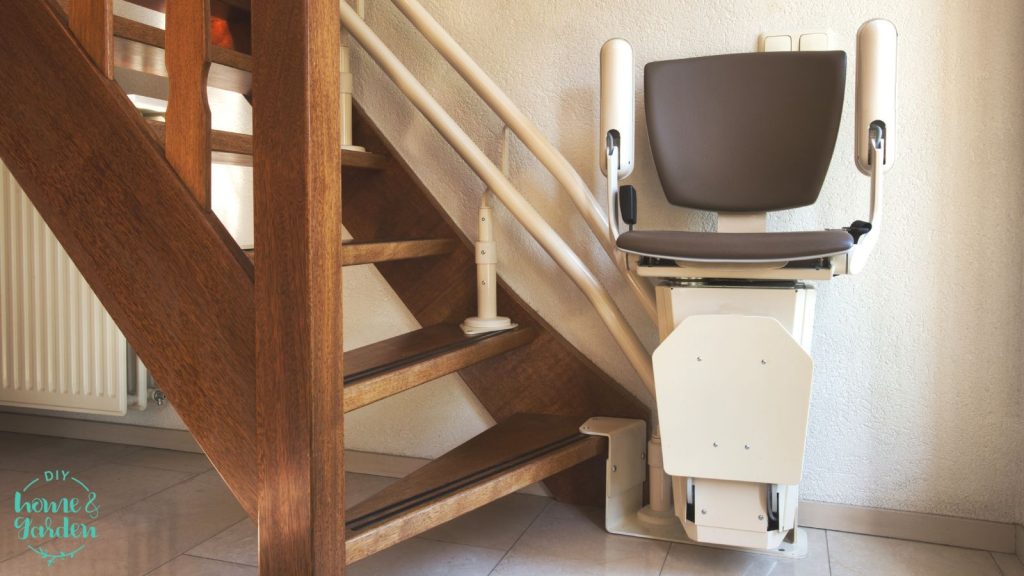Preparing your home for guests with mobility challenges
It was just before Christmas that my grandma came to visit me. Everything seemed perfect—the decorations were up, the house was spotless, and the smell of freshly baked gingerbread filled the air. When was the moment I noticed her mobility challenges?
When she struggled to get up the stairs, I realized that my home wasn’t quite
as guest-friendly as I had thought.
Little did I know, a few simple adjustments could have made all the difference.
With just a few smart modifications, I made my home safe and comfortable for
my grandma.
Want to know how I did that?
Here’s my handy checklist that’ll help you create a welcoming, accessible
environment for your loved ones.
1 – Entryway Adjustment
Remember, the very first hurdle often comes at the front door. If there are steps leading into your home, consider portable ramps or handrails to make access easier.
Ensure the path is well-lit and free of obstacles like plants, shoes, or loose mats that could cause someone to trip. A non-slip mat is also a great addition, especially in wet weather.
Pro Tip: A doorbell extender with a flashing light or louder sound can be helpful for guests who are hard of hearing.
Remember, the very first hurdle often comes at the front door. If there are steps leading into your home, consider portable ramps or handrails to make access easier.
Ensure the path is well-lit and free of obstacles like plants, shoes, or loose mats that could cause someone to trip. A non-slip mat is also a great addition, especially in wet weather.
2 – Handrails and Stairlifts
If your home has stairs, it’s essential to ensure they are safe. Add sturdy handrails on both sides of the staircase, and if possible, install a stairlift for more permanent mobility support.
A stairlift can make a world of difference for guests with limited mobility.
Quick Fix: Place reflective tape on the edges of each step to improve visibility.

3 – Bathroom Accessibility
Bathrooms can be tricky for people with mobility challenges. Install grab bars near the toilet and in the shower or bath to provide extra support. A raised toilet seat and non-slip mats can also help prevent falls.
Extra Care: Consider a walk-in shower or bath for a long-term solution. For more immediate adjustments, a shower chair and handheld showerhead can offer greater comfort and safety.
4 – Remove Clutter
One of the simplest but most effective steps is to clear the pathways in your home. This means removing rugs that could slip or curl up, rearranging furniture to create wider walkways, and ensuring any cords or cables are tucked away.
Remember to keep the house well-lit, especially at night. Sensor lights are a great option for hallways and bathrooms to avoid any mishaps.
5 – Adjustable Seatings
If your guest has difficulty getting up from low furniture, providing chairs with firm, supportive seats at an appropriate height can make a big difference. Consider using seat risers or purchasing a chair with built-in lift assistance.
Quick Tip: Armrests are not just for comfort but can also help guests push themselves up with ease.
6 – Bedroom Comfort
Ensure the bedroom is a safe and comfortable space. If your guest uses a wheelchair, make sure there’s enough space to move around. Bed rails or grab bars can help with getting in and out of bed.
Consider placing a nightlight or bedside lamp within easy reach.
Also, think about adding a small table nearby for essentials like water, medication, or a phone.
7 – Kitchen Considerations
Kitchens are the heart of the home, and you’ll want your guests to feel included. Right?
So, store frequently used items at waist height to minimize bending or reaching. If your guest is using a wheelchair, a table or counter that is accessible at chair height will help them feel more comfortable.
Bonus Tip: For added safety, make sure any slippery surfaces, like tiled kitchen floors, have non-slip mats.
8 – Don’t Forget the Garden!
If your guest enjoys spending time outside, ensure that your garden or patio is also accessible.
What You Can Do:
- Add a ramp or level pathway for easy access.
- Make sure outdoor lighting is sufficient, especially along walkways.
- Remove tripping hazards like uneven pavers or overgrown roots.
FAQs

- How can I quickly make my home safer for guests with mobility challenges?
Focus on removing clutter, securing rugs, adding grab bars in bathrooms, and providing clear pathways.
- What should I ask my guests to make their stay more enjoyable?
Enquire about any specific needs they have, such as preferred sleeping arrangements or mobility aids they might require.
- Are there affordable options for improving home accessibility?
Yes, look for budget-friendly solutions to enhance comfort and safety, such as reconditioned stairlifts, non-slip mats, portable ramps, and adjustable furniture.
A Home That Welcomes All
Preparing your home for guests with mobility challenges isn’t just about safety—it’s about making them feel comfortable and at ease. A few minor adjustments can help them move around freely and enjoy their visit without any worry.
Take a walk through your home and think about their needs. Simple changes can make a big impact, ensuring they feel relaxed and welcome.
Your thoughtful efforts will not go unnoticed, giving both you and your guests peace of mind in a space that feels inviting.

